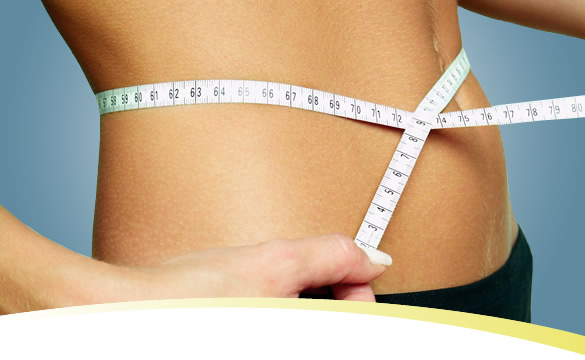Cholesterol, HDL, LDL…we often hear about them but what are they really?? It may seem confusing at first but challenge yourself and learn more about them because they come in hand to protect yourself and lower your risk of heart attacks and strokes!
What is cholesterol?
Cholesterol is not something to fear. It is found in every cell of the body and is actually essential for many processes like digesting fat and producing many hormones. But when it becomes high, either from overproduction by the liver or from too much dietary cholesterol, well, I can’t but say that it’s serious.
There are two types of cholesterol:
- HDL: This is considered to be the “good” cholesterol and it stands for high density lipoproteins. They help carry cholesterol through the body so it can be broken down. A higher number is better.
- LDL: This “bad” cholesterol is short for low density lipoproteins. They are part of the plaque that forms and block your arteries. The lower number in the range, the better.

Now what are we comparing against? These are numbers, I know, but they are numbers you should be aware of just to know where you stand.
Status | Total Cholesterol | LDL cholesterol | HDL cholesterol |
Below 200 mg/dL | 40-100 mg/dL | 50 mg/dL and higher | |
Borderline | 200-239 mg/dL | 100-129 mg/dL | 40-50 mg/dL |
Unhealthy | 240 mg/dL and above | 130 mg/dL and above | 40 mg/dL and below |
Now what causes high cholesterol? Every person in nature inherits genes that influence his or her cholesterol level, now we can’t actually control that. However we should know that a diet high in saturated fat and trans fat can also increase blood cholesterol as can obesity and a sedentary lifestyle. We will talk about the risk factors shortly, but the big question here is: Why this huge fuss about high cholesterol?
The problem with high cholesterol! The problem lies in the deposits of cholesterol called plaque that sticks on the inside of you arteries and block the blood flow. This buildup is called atherosclerosis, it sure is a big word, but in fact it’s a state that increases the risk of blocking your coronary arteries that increases the risk of heart attack and/or that blocks the blood flow to the brain and would lead to a stroke.
As we said, there are risk factors to high cholesterol. In fact, these are divided into 2 categories, those you can control and those you can’t.
Those you really can do nothing about:
- Age: Cholesterol levels rise with age. After age 20, you should get a cholesterol test at least once every five years and your doctor may recommend more frequent testing is he finds that you have other risk factors.
- Gender: After menopause, women’s LDL levels tend to rise.
- Heredity: If high cholesterol runs in the family, well these are your genes talking and it is best if you get frequent testing.
But what about what you CAN control?!
- Excess weight: Being overweight can increase your cholesterol.
- Sedentary lifestyle: “Couch potatoing”, if I may say, is not OK whereas regular physical activity helps lower LDL and raise HDL.
- Diabetes: High blood sugar increases cholesterol levels and damages the lining of your arteries.
- Smoking: Cigarette smoking lowers HDL and increases the likelihood of blood clots.
- Medications: Certain medications can cause high cholesterol. Talk to your doctor about any medications you are taking just in case!
So…What can we do??
- Start by 150 minutes a week of exercise and distribute them however you like as long as you increase your heart rate. Quick pace walking, swimming laps, riding bikes, all are considered to be aerobic and helpful.
- Go for weight loss. For each 2 ½ kg you lose, you increase your HDL by 1 mg/dL and trimming 500 calories a day if you are overweight you help decrease your LDL by 5 to 20 percent. Just know that losing weight and maintaining it would help you no matter how modest it is, keep it up!
- Food, food, food!
-To increase your HDL: Avoid tans fats and hydrogenated fats that are found in commercially baked goods, eat monounsaturated oils like olive oil and eat 2 to 4 servings of baked fish!
-To decrease your LDL: Eat foods rich in sterols like bran, oats, whole wheat, brown rice, peas, beans, walnuts, peanuts, almonds, broccoli and apples. Moreover, limit your cholesterol and saturated fat in your diet found in fried foods, whole dairy products and non lean meats. Another nutritional tip would be to increase your intake of fibers! 25-30 grams of fiber found in vegetables, whole grains, legumes and fruits are always a plus! - Lifestyle changes like quitting smoking and limiting alcohol drinks to no more than 2 per day would help as well.
- And finally, medications prescribed by your doctor and your doctor only would help as well.




Thanks, Paty, this is really interesting information and important for us all to understand.
ReplyDeletelovely post that is so easy to understand for people like me .. you have a lovely blogspace...if u get time do visit my food blog..
ReplyDeleteSatya
Super Yummy Recipes
Satya!i loved your blog i highly recommeend it, such an amazing and exhaustive collection of rich recipes and I'm glad you were able to benefit from this post!:D
ReplyDeleteVery very informative.. sure will follow you.
ReplyDeleteInteresting blog indeed. Thanks for sharing. High cholesterol food are not good for our health. Always eat the right food.
ReplyDelete